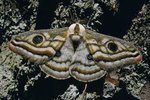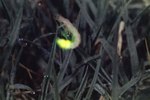Clear-winged butterflies, also called glasswing butterflies, live mostly in Central America and South America, some venturing as far north as Mexico. They look like other butterflies in every way except one: Instead of sporting brilliant color displays, they have wings you can see through.
Wings
Their wings are shaped like those of other butterfly species, but clear-winged butterflies lack the tiny scales necessary to create color. The overlapping scales provide multicolor displays on the wings of many butterflies, but the clear-winged variety has only a few concentrated around the outer edges, often in brown or orange. Veins appear like webs throughout the wings, but these don't add much color -- they typically look brown.
Food
Glasswing butterflies enjoy the tasty nectar of flowers, and they eat bird droppings. The bird droppings provide essential amino acids; the sugary nectar provides other nutrients as well as energy. These butterflies prefer flowers found in the Asteraceae and Boraginaceae families. Asteraceae includes flowers such as forget-me-nots and bluebells, while Boraginaceae includes those such as ragweed, goldenrod and marigolds. They target these flowers specifically because they help the butterflies produce alkaloids that make them taste bad to predators as well as help them produce sex pheromones during mating season.
Mating
Clear-winged butterfly males congregate in large groups when it's time to mate. They release pheromones from small hairs along their rear wings and wait until females decide to come their way. Females follow the scent of the group and fly to it to find a mate.
Metamorphosis
The interesting coloration, or lack thereof, doesn't start after the butterfly goes through metamorphosis. The caterpillar looks similar to many other species, sporting a brown color with long spikes. But when the caterpillar pupates, ithe creature creates a chrysalis that's different from those of other species. Instead of a typical brown or green color, this caterpillar creates a metallic-looking silver chrysalis. The chrysalis resembles a little mirror, earning the butterfly the nickname "espejitos," or small mirror, in Costa Rica.





